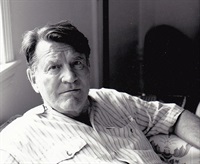EP90 Workshop 18 - Directive Therapy - Jay Haley, MA
- Average Rating:
- Not yet rated
- Topic Areas:
- Workshops | Psychotherapy | Directive Therapy
- Categories:
- Evolution of Psychotherapy | Evolution of Psychotherapy 1990 | Pioneers in Couples and Family Therapy
- Faculty:
- Jay Haley, MA
- Duration:
- 2 Hours 05 Minutes
- Format:
- Audio Only
- Original Program Date:
- Dec 14, 1990
- License:
- Never Expires.
Description
Description: This workshop spotlights directive therapy—an action-driven approach where therapists take an active role in guiding change. Instead of passively listening, practitioners assign tasks, offer strategic advice, and use creative interventions like ordeals to spark progress. With real-life cases ranging from relationship struggles to bulimia and sexual masochism, the session shows how targeted directives lead to quick, meaningful results. Topics include shifting dynamics in couples therapy, motivating resistant clients, and making brief therapy both effective and impactful—all while maintaining clear boundaries and professional focus.
Syllabus Description: Strategic directives are powerful methods to elicit change. Varieties of directives will be discussed and illustrated with videotaped examples.
Educational Objectives:
- To learn the different types of directives useful in therapy
- To learn the stages of Directive Therapy
*Sessions may be edited for content and to preserve confidentiality*
Credits
Handouts
| Timestamped Transcript (1.5 MB) | 41 Pages | Available after Purchase |
| Ericksonian Learning Snapshot (246.4 KB) | 2 Pages | Available after Purchase |
Faculty

Jay Haley, MA Related Seminars and Products
Jay Haley (M.A., 1953, Stanford University) was Director of Family Therapy Institute of Washington, D.C. He was one of the leading exponents of the strategic/interpersonal approach to family therapy. Haley served as Director of the Family Experiment Project at the Mental Research Institute and as Director of Family Therapy Research at the Philadelphia Child Guidance Clinic. He has authoered seven books, co-authored two and edited five. Additionally, he has more than 40 contributions to professional journals and books. Haley is the former editor of Family Process, and the first recipient of the Lifetime Achievement Award of The Milton H. Erickson Foundation.


